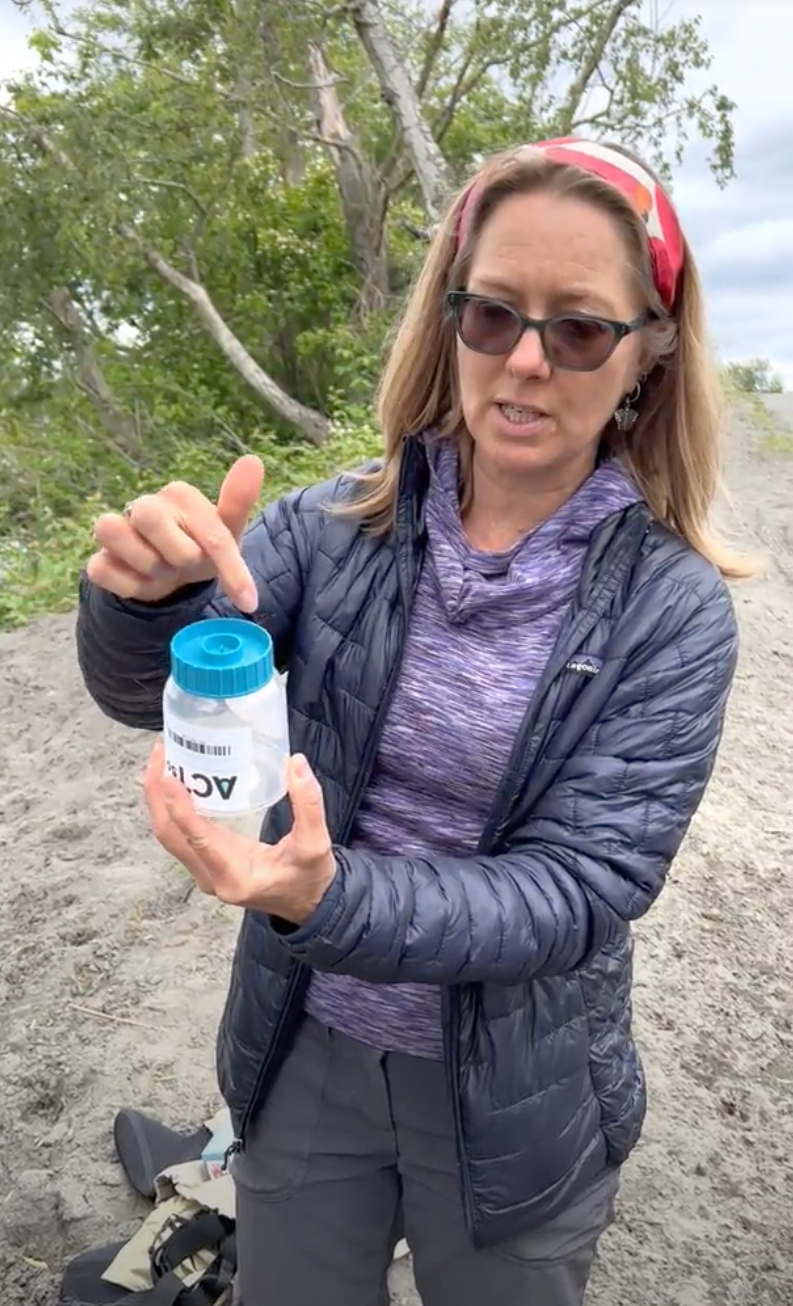Earlier this week, Waterkeeper Alliance released a groundbreaking new analysis of American waterways that sounds the alarm on a PFAS pollution emergency. In a test of 114 waterways from across the country, 83% were found to contain at least one type of PFAS—dangerous per- and polyfluoroalkyl substances that are widely linked to serious public health and environmental impacts. RE Sources, a Waterkeeper Alliance member, and home of the North Sound Baykeeper, took samples from two sites in the lower Nooksack River watershed as part of the nationwide study. Fortunately, both samples came back as “non-detect” for ALL 54 PFAS compounds tested. Washington and Oregons samples appear to show low levels of contamination compared to other parts of the country, though there is still cause for concern locally.

A total of 113 local Waterkeepers, including RE Sources’ North Sound Baykeeper, collected samples from 114 waterways across 34 states and the District of Columbia (D.C.). Independent analysis indicates a shocking level of contamination, with 94 participating Waterkeeper groups confirming the presence of PFAS in their waterways. Waterways in 29 states and D.C. were found to be contaminated by at least one, but most frequently, many revealed the presence of up to 35 different PFAS compounds.
“When we began testing waterways for PFAS earlier this year, we knew that our country had a significant PFAS problem, but these findings confirm that was an understatement. This is a widespread public health and environmental crisis that must be addressed immediately by Congress and the U.S. Environmental Protection Agency (EPA). To begin tackling this urgent problem, Congress should start by passing the Clean Water Standards for PFAS Act of 2022, and EPA must prioritize using the funding from the Bipartisan Infrastructure Law to coordinate national monitoring and adopt regulatory standards for PFAS contamination. This report provides the information necessary for federal and state governments to take action and protect the health and safety of our communities,” said Marc Yaggi, CEO of Waterkeeper Alliance.
In some places, like creeks connected to the Potomac River in Maryland, the Lower Susquehanna River in Pennsylvania, and the Niagara River in New York, the level of contamination is thousands to hundreds of thousands times higher than what experts say is safe for drinking water. This is of particular concern as an estimated 65% of Americans source their drinking water from surface waters similar to those sampled.
These findings are an important step toward filling in a major data gap and validate the Alliance’s call to EPA for increased and widespread monitoring to gain a complete picture of PFAS contamination in all watersheds across the country.
RE Sources monitored the lower Nooksack River to assess PFAS levels potentially resulting from a myriad of industrial dischargers and stormwater runoff into the river and because it’s the biggest river system in our region with huge cultural, environmental, economical significance. It is a place that people fish, swim, and rely on for drinking water.
Since at least the 1950s, PFAS have been widely used in manufacturing and are found in many consumer, commercial, and industrial products. Examples include waterproofing fabrics, non-stick cookware, grease-resistant wrappers, personal care products, and fire-fighting foams. Wastewater treatment plants are known sources of PFAS, because they concentrate the chemicals from various sources that end up in our wastewater.
We know these forever chemicals accumulate in people and in the environment, so now is the time to ensure we do whatever we can to avoid levels of contamination that this report is showing in other parts of the country.”
– Kirsten McDade, RE Sources Pollution Prevention Specialist
Often referred to as “forever chemicals,” PFAS do not break down over time. Instead, these dangerous chemicals accumulate in people, wildlife, and the environment. As a result, PFAS have been found in surface water, air, soil, food, and many commercial materials. Scientific studies increasingly link these toxic chemicals to serious health conditions such as cancer, liver and kidney disease, reproductive issues, immunodeficiencies, and hormonal disruptions.
Despite serious health risks, there are currently no universal, science-based limits on the various PFAS chemicals in the United States. For many PFAS chemicals, the EPA has not even set a health advisory limit that would give the public a baseline to determine what amount of PFAS is unhealthy in drinking water. In most cases, the EPA is not doing adequate monitoring for these chemicals, which is why these findings are so unique and important.
“While it’s heartening to see that samples from the Nooksack River showed non-detects for all 35 PFAS compounds tested, the troubling findings at the national level highlight a need for more thorough monitoring throughout our region,” said Kirsten McDade, RE Sources’ Pollution Prevention Specialist. “In a separate testing effort, PFAS contamination was detected in sewage sludge from the City of Bellingham’s wastewater and in Bellingham Bay. We know these forever chemicals accumulate in people and in the environment, so now is the time to ensure we do whatever we can to avoid levels of contamination that this report is showing in other parts of the country.”
This data plainly demonstrates that Congress and EPA must act with urgency to control persistent PFAS contamination across the country. The current lack of oversight puts the health and safety of communities and ecosystems across the nation at risk and results in costly cleanup and treatment activities to remove PFAS contamination after it has occurred. To learn more, visit Waterkeeper Alliance’s website, as well as RE Sources’ Fighting Pollution program.
Want to help fight pollution here in Northwest Washington? Sign up for RE Sources’ email list to get timely news, updates, and actions.
